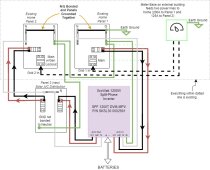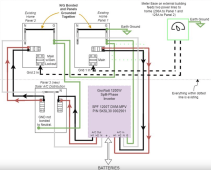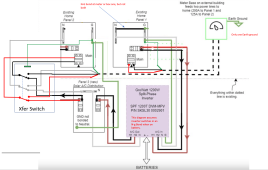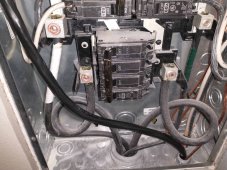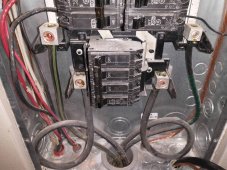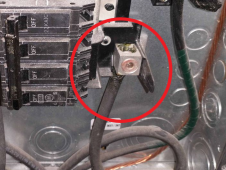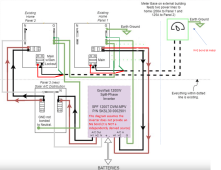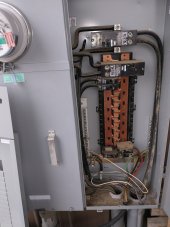I'm working on my new solar build using a Growatt 12kW split-phase inverter from Sig. Solar. Trying to make sure I'm doing the grounding correctly to avoid ground loops. Please see attached image of what I have. Essentially, it's two home service panels (independent panels since each gets fed it's own service line from the meter base on another building). Panel 1 feeds A/C into the inverter and Panel 2 accepts A/C from the inverter via it's back-feed generator breaker (has safety lockout plate to make sure main is off when gen. breaker is on). The A/C output of the inverter runs to a backfeed breaker in a new small breaker panel where solar loads will be distributed (to home Panel 1 during power outage and E-Car charger 24x7).
I was thinking since Panel 3 doesn't bond N to G it would be ok. But now thinking that since N is bonded to ground in Panel 2 it might feed a ground back to the inverter via N (NOTE: when panel 2's main is switched OFF, N is still connected which is bonded to G - hope that makes sense). Also read that some Growatt inverters manage the G/N bonding internally now. I understand the one N/G bonding location rule but I've got two essentially independent panels each with N/G bonded with the inverter siting between them. Anyway, I've read some of the grounding documents here and still very confusing! Thanks in advance for looking this over and giving me feedback!
I was thinking since Panel 3 doesn't bond N to G it would be ok. But now thinking that since N is bonded to ground in Panel 2 it might feed a ground back to the inverter via N (NOTE: when panel 2's main is switched OFF, N is still connected which is bonded to G - hope that makes sense). Also read that some Growatt inverters manage the G/N bonding internally now. I understand the one N/G bonding location rule but I've got two essentially independent panels each with N/G bonded with the inverter siting between them. Anyway, I've read some of the grounding documents here and still very confusing! Thanks in advance for looking this over and giving me feedback!



